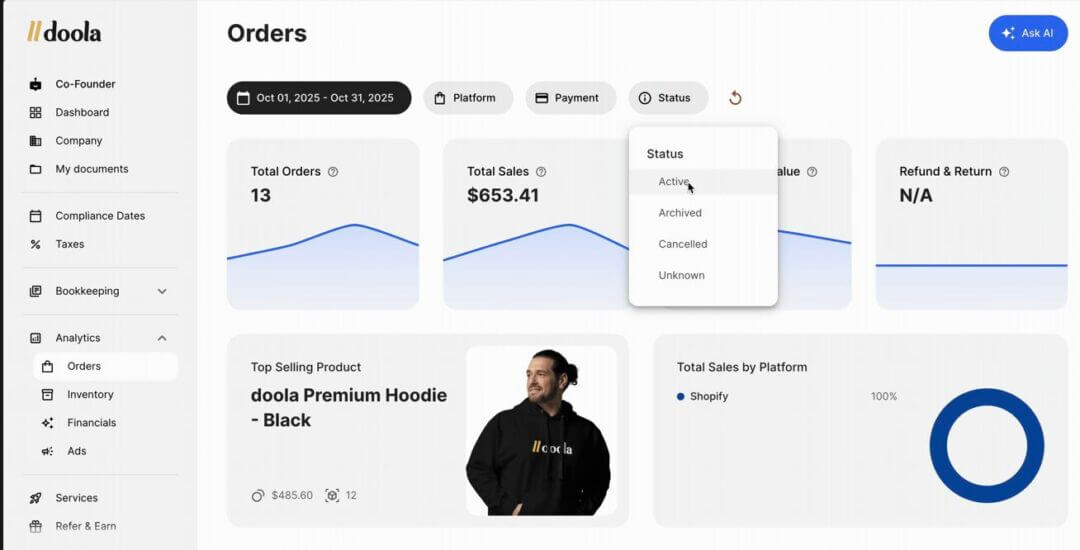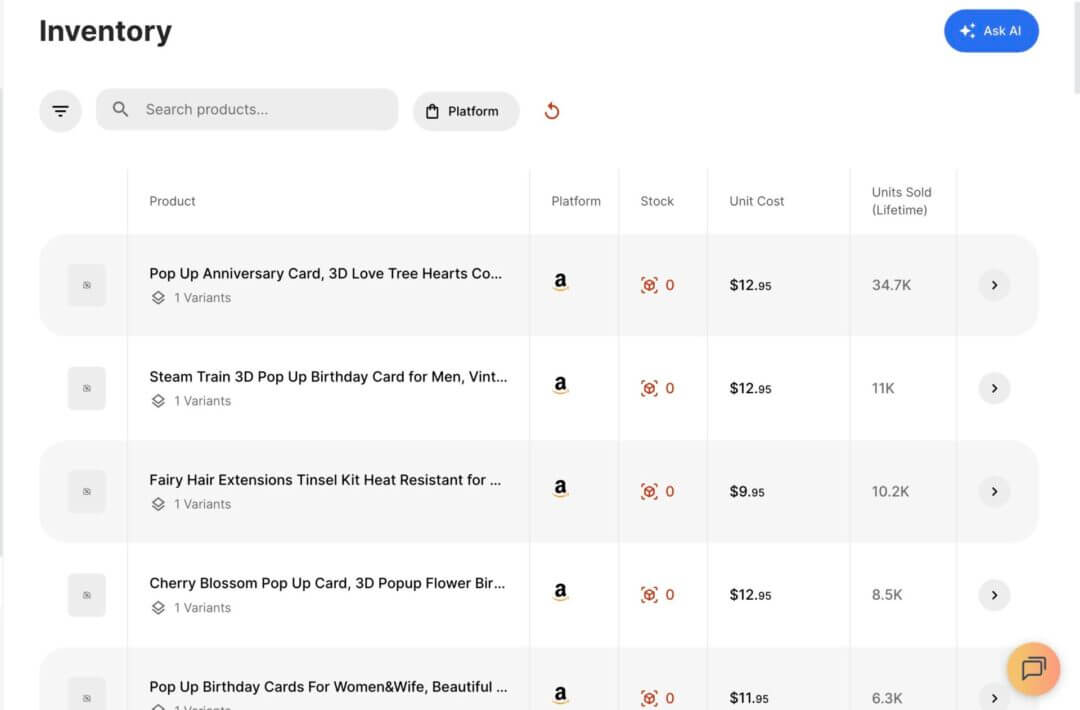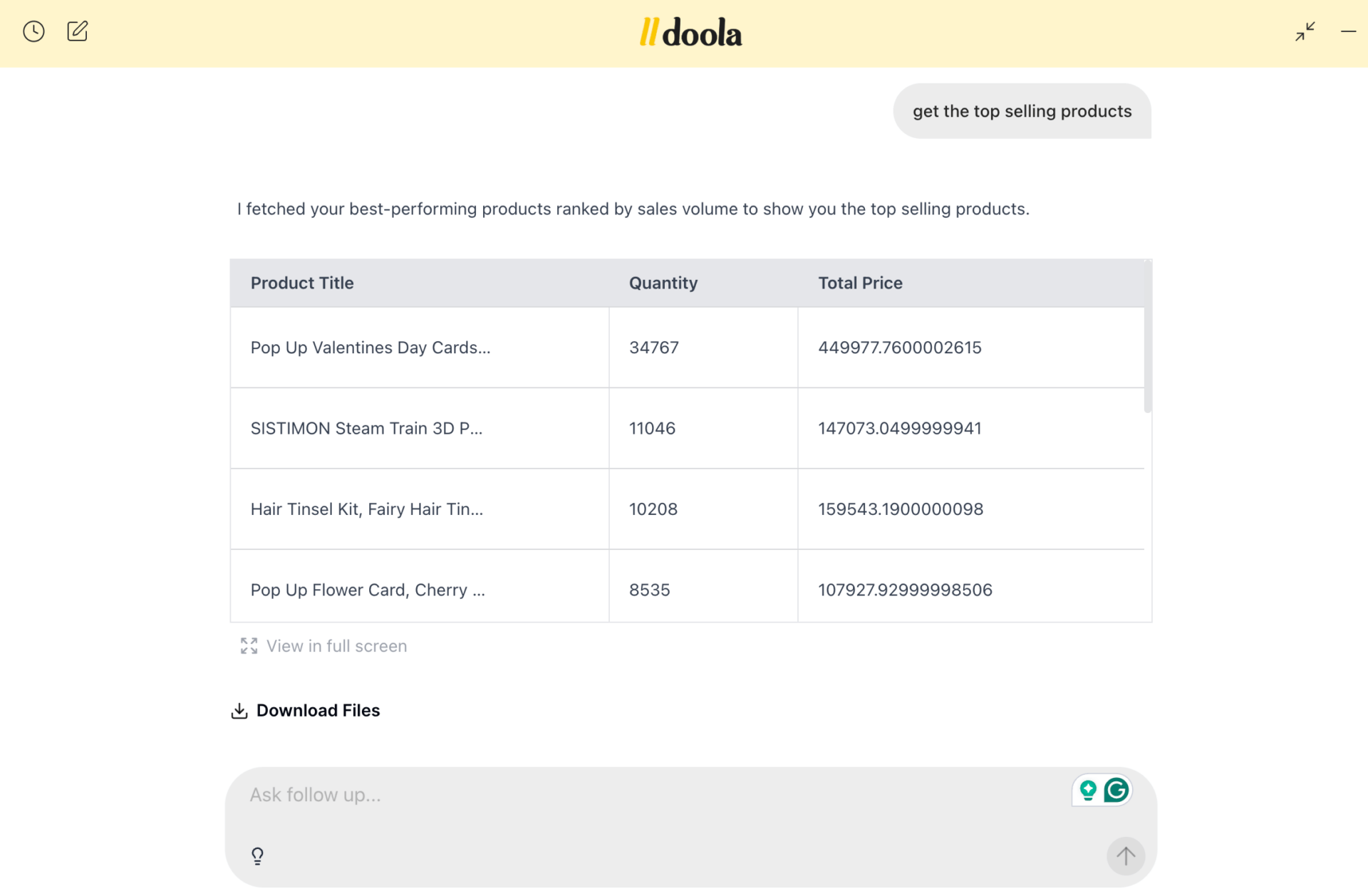Get expert Black Friday 2025 e-commerce tips to drive sales, cut through the noise, and win shoppers during the biggest weekend of this year.
Black Friday has shifted from a sprint to a marathon. The audience is bigger, competition is sharper, and ad costs are rising.
Brands that relied on gut feeling and deep discounts last year ended up facing inventory shortages, shrinking margins, and costly mistakes. The opportunity is real, and so are the headwinds.
In the weeks before Black Friday and Cyber Monday (BFCM), ad costs surge, inboxes overflow, and shoppers wait for deals.
Media buyers already expect 25–30% higher CPCs, which makes guessing your winners a costly gamble. The difference between profit and panic comes down to preparation.
The next few weeks are your strategy window. This guide about Black Friday 2025 e-commerce best sellers shows how to pick winners, align operations, and run a profit-first Black Friday without a data scientist.
Why Predicting Best-Sellers for Black Friday Matters
In 2024, Cyber Monday generated $13.3 billion in U.S. sales, and the full holiday season reached $241.4 billion, according to Adobe. The buyers will show up. The brands that win are the ones that meet that demand with the right products in the right quantities.
Guesswork is expensive. Overbuying traps cash you need for ads and operations. Underbuying creates stock outs that push shoppers to competitors.
Returns then chip away at margin long after the sale, with e-commerce averages near 16.9% last year. Predicting likely winners lets you buy closer to real demand, keep best-sellers available, and avoid clearance losses.
How AI Can Help You Maximize Profit During Black Friday
AI has transformed how founders manage their businesses. What used to take spreadsheets and late nights now takes minutes. It does not replace intuition. It sharpens it, allowing you to move faster.
The Rise of No-Code AI Tools for E-Commerce Planning
Modern tools read your store data and surface what matters:
- Google Analytics 4 builds predictive audiences based on purchase probability, helping you target shoppers most likely to convert.
- Klaviyo uses predictive analytics to flag customers ready to reorder or churn, so you can reach them at the perfect moment.
- Inventory planning apps forecast demand, track stock levels, and alert you to potential stockouts before they happen.
- Ad performance and margin tools like Triple Whale or Northbeam reveal how each SKU drives profit after ad spend, keeping campaigns tied to real returns.
Together, these tools help you spot patterns early. The real challenge is connecting your numbers across sales, marketing, inventory, and finance without wasting time switching tabs.
That is why many founders opt for a single tool that consolidates all their needs. When bookkeeping, transactions, taxes, compliance, and performance insights are all in one dashboard, every decision becomes easier.
With doola, ask simple questions like “Which products drove the most margin this month?” or “How did ad spend affect revenue last week?” and get clear answers in seconds.
🔖 Related Read: Best Sales Analytics Software for E-Commerce: Top Picks + How to Choose the Right Tool
4-Step Playbook to Predict Black Friday 2025 E-Commerce Best Sellers
Now that you know why predicting your winners matters and how AI makes it possible, it’s time to turn those insights into action.
The weeks leading up to Black Friday 2025 are your most crucial window to prepare; a time to translate data into confident decisions, align operations, and double down on what truly drives profit.
Here’s a simple, data-driven framework you can follow to identify your most profitable products, optimize inventory, and set your store up for a smooth, high-margin Black Friday weekend.
Step 1: Gather Your Sales Data for Effective E-Commerce Forecasting

Start by collecting 6–12 months of store data: orders, sessions, add-to-cart rates, refunds, and returns. The goal is to see what actually moved, what stalled, and why.
Focus on 3 things:
- Match product IDs across your store, ad platforms, and email tools so that each SKU tells a consistent story.
- Remove duplicates, canceled orders, or one-off tests that distort performance.
- Add margin, ad spend, and unit cost so revenue ties to true profit.
When data from Shopify, Meta Ads, or Klaviyo resides in different tools, your insights become scattered. Pull them into one workspace to review orders, segments, and margins side by side.
Run a quick check in your Pulse dashboard, filter for units sold, return rate, and margin. You’ll spot patterns instantly!
Step 2: Use AI to Find Your Best-Sellers and Maximize Profit


Once your data is clean, let AI surface patterns you can trust.
Here’s the practical way to do it:
- Blend demand, conversion, and margin to find your strongest SKUs.
- Look for consistency: products that sold steadily, not just during one campaign.
- Track patterns: How many units sold last season? What is the current add-to-cart rate? What margin remains after deducting refunds and shipping costs?
Modern AI tools can automatically visualize sales velocity and margin trends, turning rows of data into simple graphs that reveal momentum.
Within doola, you can directly ask these questions to Ask AI:
- “Which SKUs delivered the best profit this month?”
- “What’s my ad-spend-to-revenue ratio this week?”
You get answers in seconds, and every response is grounded in your business-specific data.
Step 3: Adjust Your Inventory and Strategy for Black Friday Sales


Data is only useful when it drives action.
Use your insights to:
- Increase inventory for predicted winners.
- Lock in packaging and fulfillment partners early.
- Build ad creatives and emails around your top SKUs, which are those with both high conversion rates and healthy margins.
To prioritize what truly matters, calculate your WIN Index (Weighted Intent & Need):
WIN Index = Demand × Conversion × Margin
This gives every SKU a score you can rank. Products with the highest WIN Index deserve your budget, attention, and ad spend. Keep a small safety buffer so traffic spikes do not create stock depletion
With everything visible in one dashboard, including inventory, orders, and spend, you can adjust in real-time as the data changes.
Step 4: Run the 90-Minute WIN Framework for Black Friday Profit Margins


This quick framework helps founders turn data into an actionable Black Friday plan!
Here’s how to do it:
- Collect your data (orders, sessions, returns, margins)
- Score your SKUs using the WIN Index formula
- Pick the top 20% that drive 80% of your profit
- Align your ads, bundles, and promotions around those products
- Set safety stock to avoid missed sales
- Track results in real time. Watch orders, revenue, and refund rate.
- Review post-event performance to plan your next drop
In doola, you can handle all of this in one dashboard. Track sales, monitor profit and COGS, and use AI to compare forecasts vs. actual performance.
For example, ask:
- “Which SKUs outperformed?”
- “How much did inventory cost compared to revenue?”
Additional Tips for Planning in 2025
By this point, you’ve built the foundation to forecast your winners and run a profit-first campaign. But success in Black Friday 2025 e-commerce isn’t just about prediction; it’s about preparation.
The brands that thrive are the ones that fine-tune every moving part before the rush begins.
Here are a few additional tips to help you strengthen your strategy, protect your margins, and stay organized as you gear up for the biggest sales season of the year.
Segment Your Loyal Buyers Early
Your repeat customers are your most reliable profit engine. They open more, click more, and convert faster because they already trust you. Treat them like insiders and they will act like one.
Try this: Build a VIP Early Access list, offer first pick on limited drops, and use subject lines that feel earned, like “You got first pick.” Early signals from VIPs help you decide which SKUs deserve the spotlight.
Launch “Black November” With Micro-Drops
Black Friday is a month, not a day. Small, controlled releases teach you what resonates before the main event.
Example plan:
- Week 1: Micro-drop to VIPs only
- Week 2: Re-launch last year’s winner with a light promo
- Week 3: Early-bird bundles or gift sets to build momentum
Offer Profit-Safe Discount Tiers
Discounts drive volume. Unplanned discounts drain margin. Tier your offers so every deal earns its keep.
Practical setup:
- Tier A: Hero products with small discounts or bundles that lift AOV. Example: best-seller plus refill with free shipping.
- Tier B: Support products with cross-sell or upsell prompts. Example: add two accessories and save 20%.
- Tier C: Clearance with deeper markdowns to move old stock.Use your WIN Index (Demand × Conversion × Margin) to assign SKUs to the right tier. You protect profit while staying competitive.
🔖 Related Read: Sales Analytics: How to Track, Analyze, and Act on Your Sales Data
Strengthen Your Operations Before the Rush
Great marketing fails when operations break. Fix the weak links now while it is quiet.
A one-hour stress test today can save a thousand tickets on Friday night.
Confirm lead times, line up a backup supplier for high-demand SKUs, finalize packaging and inserts, conduct a mobile checkout test, and pre-write support replies for common questions.
Use an All-In-One System to Stay Organized


Decisions slow down when finance, taxes, and inventory live in different tools. With doola, you can keep bookkeeping, analytics, compliance, and tax setup in one dashboard.
🔖 Related Read: E-Commerce Taxes for Beginners: A Simple Guide for New Online Sellers
Checklist for Clean Execution
Your business needs more than good marketing. It needs a foundation built for speed, margin, and clarity.
Use this checklist to make sure nothing critical slips through when orders flood in:
📌 Financial Readiness
- Update your books weekly so you know exactly what margin each SKU is delivering.
- Monitor Cost of Goods Sold (COGS) at the SKU level, so you spot slow movers and high-cost winners early.
- Keep your business bank account separate from personal finances to avoid confusion and tax headaches.
- Run a cash-flow forecast 30-60 days out to check whether you can support ad spend + inventory without draining working capital.
📌 Operational Readiness
- Confirm the lead time with your primary supplier and line up at least one backup vendor for your key SKUs.
- Finalise packaging, inserts, and gift boxes now, so during BFCM you’re shipping, not thinking.
- Run a site stress test, including mobile checkout, load time, and one-click payments. Fix issues now when it’s quiet.
- Write and queue support responses so your team isn’t scrambling to reply to “Where’s my order?” emails.
📌 Strategic Readiness
- Create your WIN Index (Demand × Conversion × Margin) and tag the top 20% SKUs as your hero list.
- Design ads, email flows, and bundles around those SKUs; treat them like your VIP lineup.
- Segment your audience: VIPs, repeat buyers, new prospects. Tailor messaging for each so you avoid “discount fatigue”.
- Schedule all creative assets, launch emails, and promotional pages at least two weeks in advance so you’re ready for live traffic.
📌 System Readiness
- Integrate your store, finance, taxes, and operations into one workspace so all dashboards update in sync.
- Maintain compliance, reporting, and financial dashboards so nothing stalls because of missing data or audit surprises
If you want one platform to manage all of this seamlessly, sign up with doola today! See how clear your numbers can be when everything lives in one dashboard.
Make Black Friday 2025 Your Most Profitable Yet With doola


Is your store ready for the biggest retail weekend of the year? If not, the best time to plan was last week, and the second-best time is now.
This season will reward founders who rely on data, stay agile, and make decisions quickly when signals shift. Leverage AI to uncover likely winners, optimize your inventory, and align creative campaigns around top-performing products.
Doing so will help keep your operations streamlined, ensuring you’re well-positioned for maximum profitability.
With tools like doola’s Co-Founder Actions, you can get all the insights you need in one place by simply asking. Planning your Black Friday strategy has never been easier! Make data-driven decisions that empower you to take control and outperform the competition.
Predict. Plan. Profit.
Sign up with doola today and make your Black Friday 2025 your most profitable yet, with your AI-powered assistant for smarter Black Friday planning.
FAQs


What if I only have 3–6 months of data?
You can still predict effectively if your data is clean and recent.
Start with the last 90 days of sales and add key metrics, such as sessions, add-to-cart rate, refunds, and margins, to give your model more context. The weight has increased more recently because shopping behavior changes quickly in the lead-up to Black Friday.
Finally, compare your predictions with live engagement signals such as email clicks, wishlist activity, or returning visitor behavior. When your inputs are consistent, even a few months of data can reveal strong trends worth acting on.
What if a predicted SKU underperforms on the day?
Forecasts aren’t guarantees; they’re signals.
If a product underperforms, the key is to respond quickly. Redirect ad spend toward your next best-performing SKUs and test a refreshed image, headline, or bundle offer that includes your top sellers.
Track performance live: If product views remain high but conversions drop, adjust your pricing or messaging accordingly.
If traffic itself is low, revise your placement or creative immediately. Acting fast protects your profit and prevents wasted ad spend.
How do returns and refunds affect my forecast?
Returns reshape your true profit picture, so they must be factored into your forecast.
Apply each SKU’s average return rate to your sales projections and review the top refund reasons, whether they’re size, quality, or expectation mismatches. Then, adjust your WIN Index to account for actual contribution margin, rather than just revenue.
If a SKU’s post-return margin falls below target, move it into a lighter discount tier or investigate quality improvements before restocking.
When should I reorder inventory? How much?
The simplest approach is to make reorders a rule, not a guess. Use this formula to stay ahead:
Reorder Point (ROP) = (Daily Sales Velocity × Lead Time in Days) + Safety Stock
Safety Stock = (Max Daily Sales − Average Daily Sales) × Lead Time
Example: If you sell 40 units per day on average, peak at 70, and your supplier’s lead time is 7 days,
Safety Stock = (70 − 40) × 7 = 210
ROP = (40 × 7) + 210 = 490 units
So, you reorder when the on-hand plus on-order quantity drops to 490 units.
🚀 Tip: refresh daily velocity after major promos, and verify vendor lead time before BFCM so the math reflects reality.
How does doola help without being a forecasting tool?
doola is your all-in-one command center for running your business. You can track transactions, invoices, bookkeeping, sales, compliance, and e-commerce, all in one place.
The platform connects with your business account, allowing you to view real-time cash flow and true profit before investing in more inventory or ads.
With Ask AI, you can ask questions like “Which products delivered the most margin last month?” or “How much cash can I safely allocate to new stock?” and get answers in seconds. It keeps your books clean, your numbers accurate, and your decisions fast.
News
Berita
News Flash
Blog
Technology
Sports
Sport
Football
Tips
Finance
Berita Terkini
Berita Terbaru
Berita Kekinian
News
Berita Terkini
Olahraga
Pasang Internet Myrepublic
Jasa Import China
Jasa Import Door to Door
Situs berita olahraga khusus sepak bola adalah platform digital yang fokus menyajikan informasi, berita, dan analisis terkait dunia sepak bola. Sering menyajikan liputan mendalam tentang liga-liga utama dunia seperti Liga Inggris, La Liga, Serie A, Bundesliga, dan kompetisi internasional seperti Liga Champions serta Piala Dunia. Anda juga bisa menemukan opini ahli, highlight video, hingga berita terkini mengenai perkembangan dalam sepak bola.